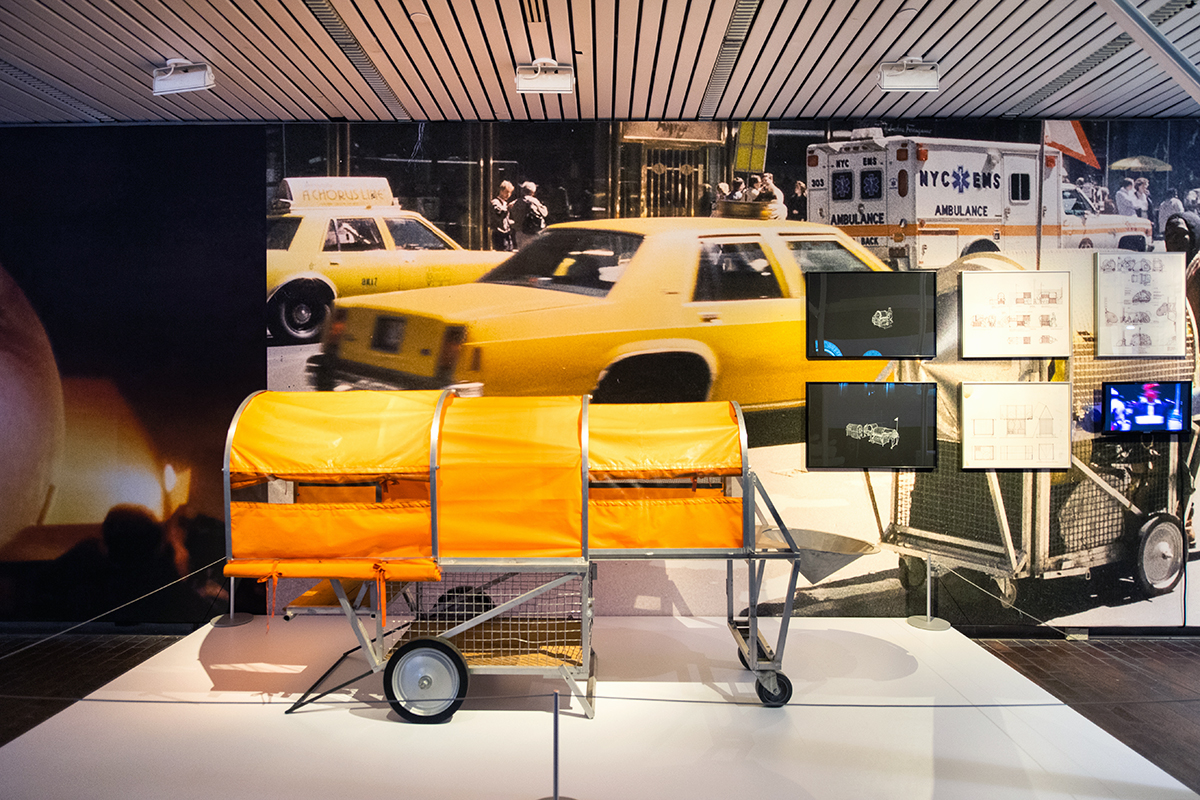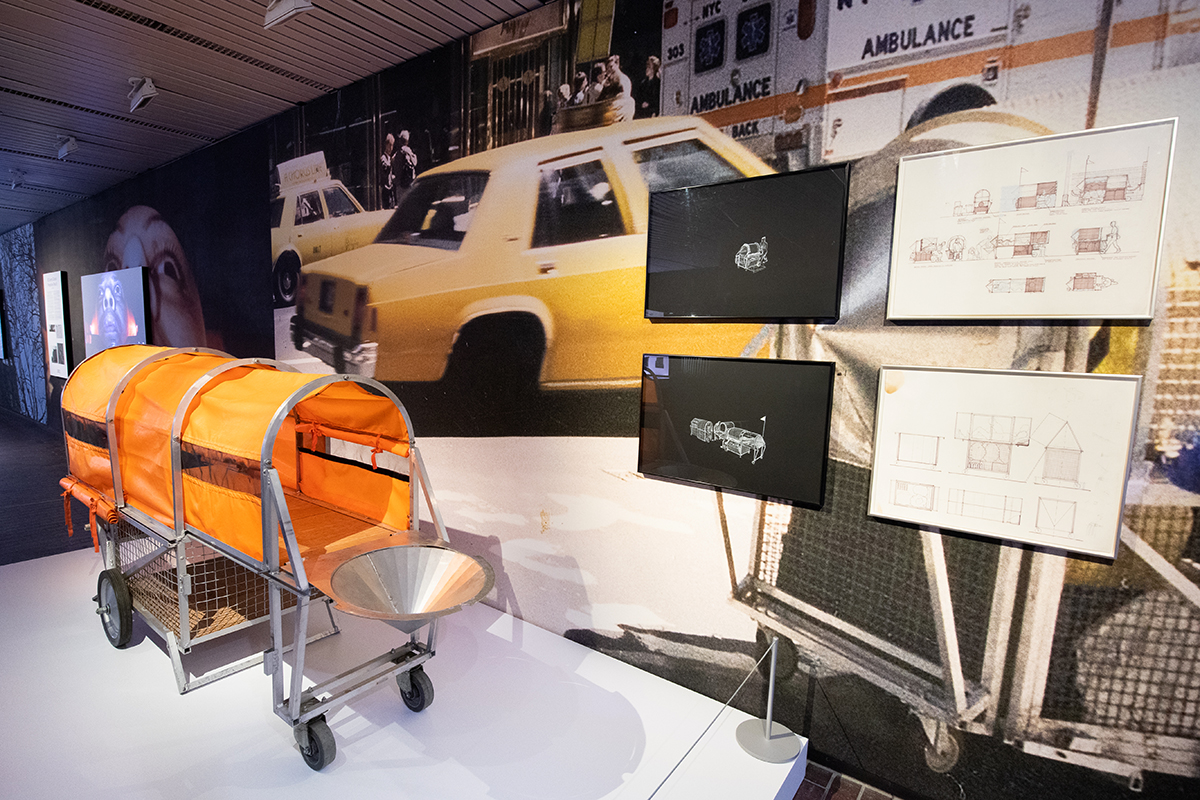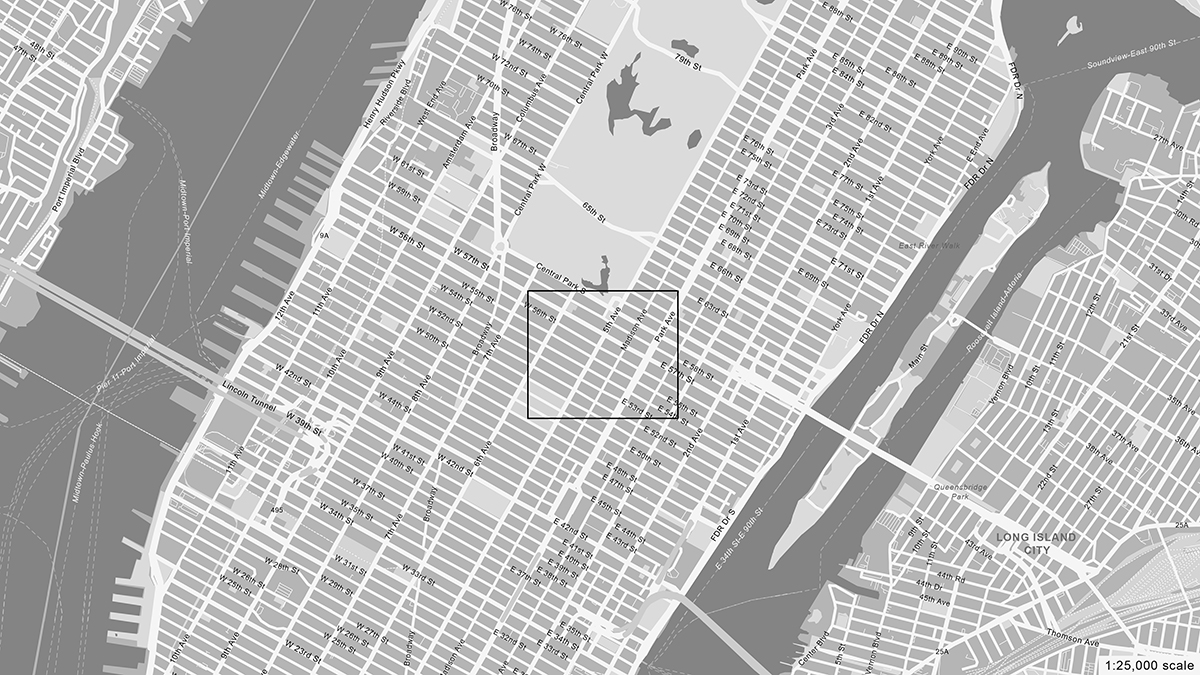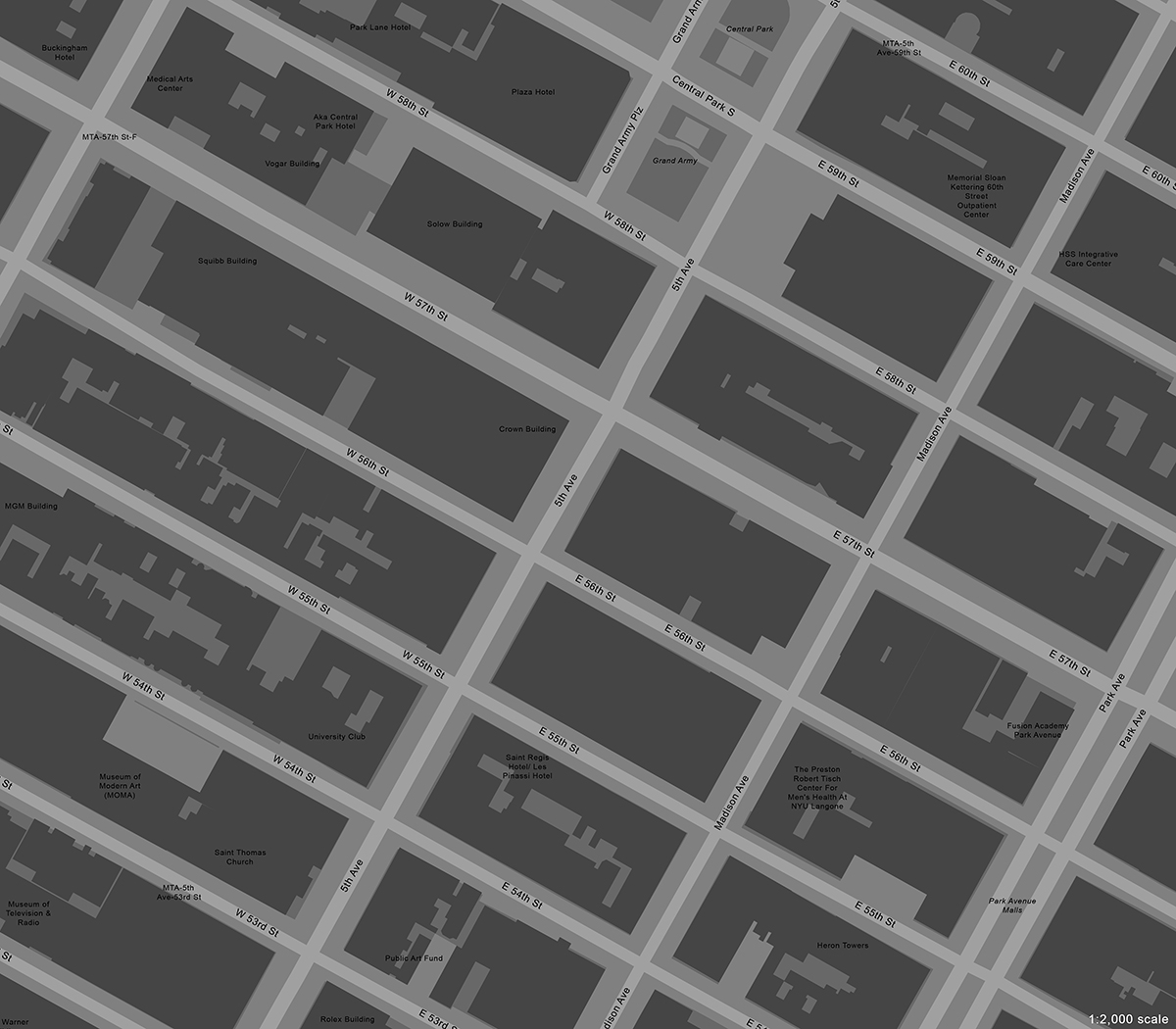Interrogative Design: Selected Works of Krzysztof Wodiczko – Homeless Vehicle
For the duration of the Interrogative Design exhibition, we will be providing expanded online content to give viewers a deeper access to selected projects. Materials for this exhibit provided by the artist, with unique edits specially produced for this project by GSD Exhibitions.
Homeless Vehicle, 1988-89, New York, New York
• New York, New York
• Philadelphia, Pennsylvania
The subject of homelessness had been addressed in public projections by Wodiczko in the 1980s, but he returned to the subject this time with his skills as an industrial designer. Similar to his earlier “instruments” and “vehicles,” what we encounter here is a dual approach—a form that is both practical, providing the user with a strategy of survival, and profoundly symbolic, questioning the economic and political systems that perpetuate the marginalization of the homeless. Created in response to a growing number of homeless people, approaching 100,000 in New York City in the late 1980s, the object we see here is the result of a series of consultations with homeless persons and modified according to their suggestions, with the overarching goal to create a vehicle that offered mobility and security. As a means of transportation and shelter, it was designed to provide the user with a sleeping space; as a survival-supporting device, it was adapted for the easy collection and storage of bottles and cans. When folded, the vehicle moves easily throughout the urban environment.
Made of aluminum, steel mesh, sheet metal, and plexiglass, the vehicle’s construction has been associated with constructivist functionalism and military technology as an “anti-anti-homeless device.” For Wodiczko, this project is an example of what he calls “scandalous functionalism,” since it responds to a need whose existence is a social and political scandal. As such, this form should be seen as a proposition towards a solution, and, in that sense, it enters the space of rhetorical forms as it raises more questions than this single object can answer. Every time we encounter this project, a singular challenge emerges to us as an audience within both the art world and urban environments: What is our social responsibility to the homeless and how are we using our skills to help these people?
The two initial models were built with the assistance of The Clocktower, an exhibition and project space at the Institute for Art and Urban Resources in Lower Manhattan, with curator Tom Finkelpearl. Further variants were developed, built, and tested further with assistance of the homeless consultants and operators at Exit Art, New York, with curator Jeanette Ingberman and support of the WECAN Redemption Center, New York, and the Painted Bride Art Center, Philadelphia, with curator Julie Courtney and the Philadelphia Recycling Center.
Homeless Vehicle, Variant 5, 1988-1989
Courtesy of the Hirshhorn Museum and Sculpture Garden, Smithsonian Institution
Drawings for Homeless Vehicle, 1987-1989
Courtesy of Galerie Lelong & Co.
Video of Homeless Vehicle, 1988-1989
Courtesy of the artist



